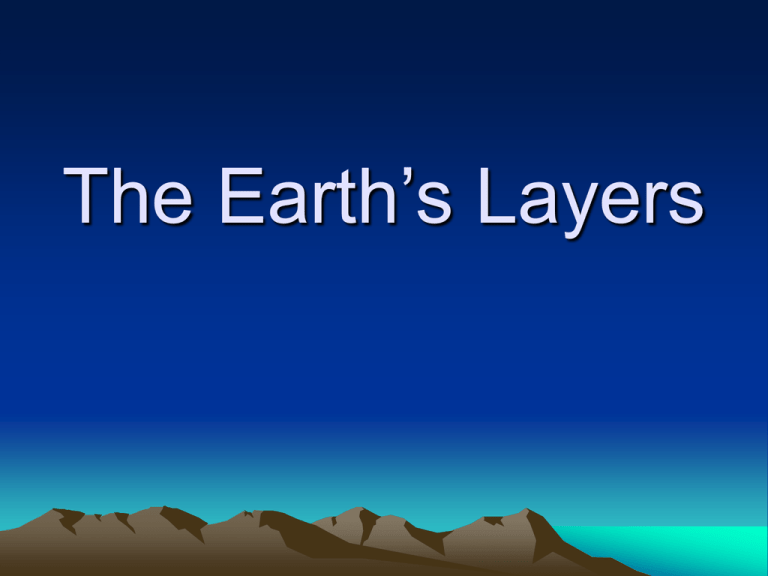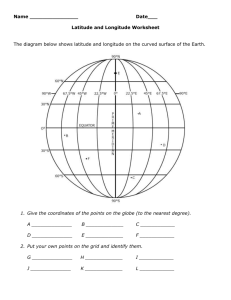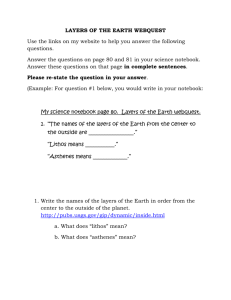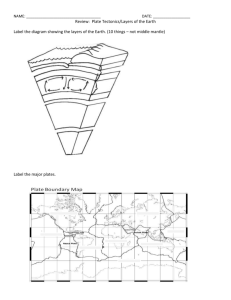The Earth's Layers
advertisement

The Earth’s Layers Objective: • The learner will be able to identify characteristics of the Earth's layers. In this activity you will: • Learn about the earth’s layers. • At the end of this lesson you will write a report about the layers of the Earth using 4 facts you learned. The Earth is divided into three layers. Crust • The crust is the layer that you live on so it is the most widely studied and understood. Crust • The crust is made of the lightest matter and the core consists of heavy metals Crust • The Earth's Crust is like the skin of an apple. It is very thin in comparison to the other three layers. Crust • The crust of the Earth is broken into many pieces called plates. The plates move along the soft mantle which is the layer located located below the crust. Crust • The plates move along smoothly but sometimes they get stuck and pressure builds up. Crust The pressure builds and causes an Earthquake as rocks break and crack. San Francisco City Hall after the 1906 Earthquake. (from Steinbrugge Collection of the UC Berkeley Earthquake Engineering Research Center) Mantle • The mantle is the largest layer of the Earth. • It is made of hot, dense rock. The rock in the mantle flows like asphalt because of the temperature differences found in the mantle. Mantle • The movement of the mantle create the movement of the Earth’s plates. Core • The core of the Earth is much like a ball of very hot metals. The inner core is surrounded by a fluid iron outer core. Core Resources • Enchanted Learning’s Earth • The Earth’s Layers Writing Activity • Write a paragraph about the earth’s layers. Include 4 facts from this presentation.






